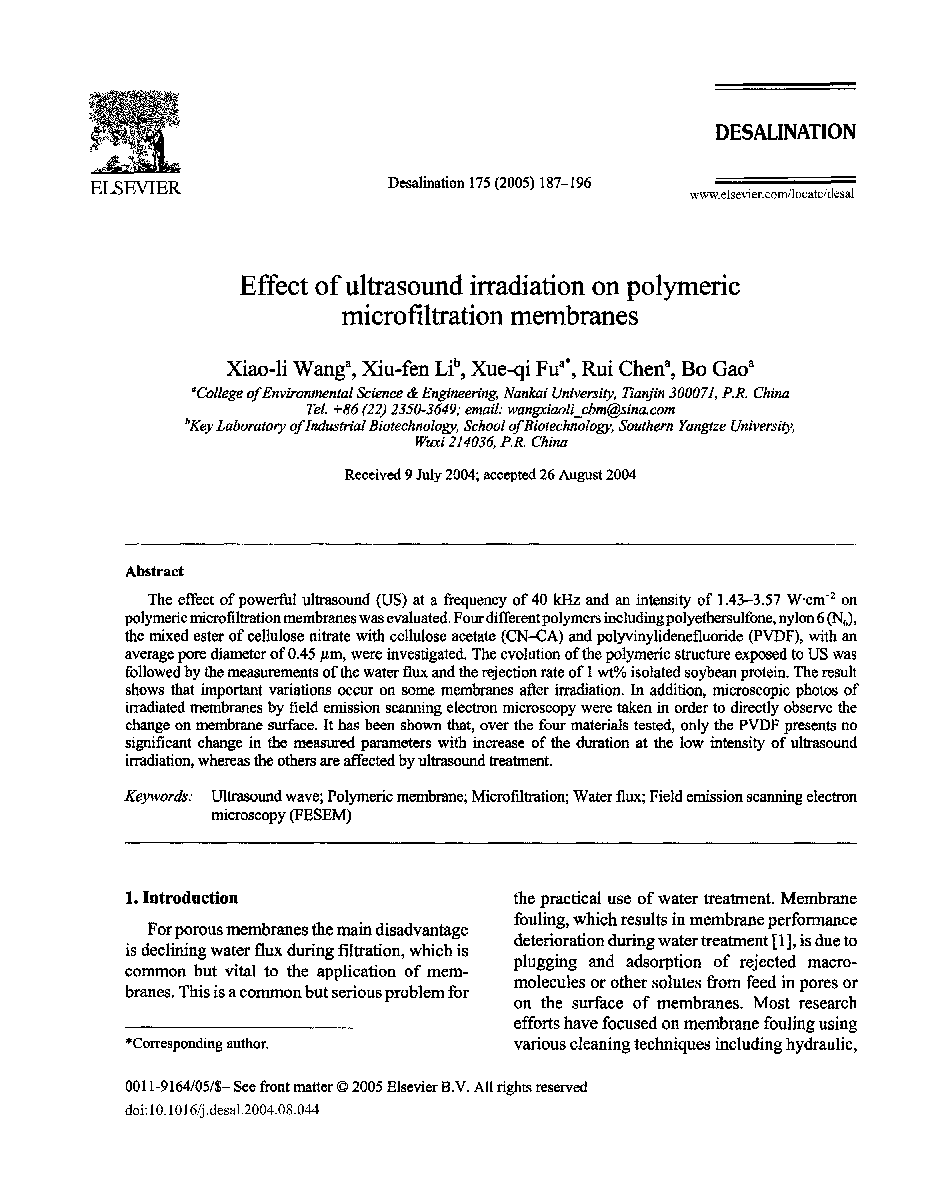| Article ID | Journal | Published Year | Pages | File Type |
|---|---|---|---|---|
| 10386249 | Desalination | 2005 | 10 Pages |
Abstract
The effect of powerful ultrasound (US) at a frequency of 40 kHz and an intensity of 1.43-3.57 W·cmâ2 on polymeric microfiltration membranes was evaluated. Four different polymers including polyethersulfone, nylon 6(N6), the mixed ester of cellulose nitrate with cellulose acetate (CN-CA) and polyvinylidenefluoride (PVDF), with an average pore diameter of 0.45 μm, were investigated. The evolution of the polymeric structure exposed to US was followed by the measurements of the water flux and the rejection rate of 1 wt% isolated soybean protein. The result shows that important variations occur on some membranes after irradiation. In addition, microscopic photos of irradiated membranes by field emission scanning electron microscopy were taken in order to directly observe the change on membrane surface. It has been shown that, over the four materials tested, only the PVDF presents no significant change in the measured parameters with increase of the duration at the low intensity of ultrasound irradiation, whereas the others are affected by ultrasound treatment.
Keywords
Related Topics
Physical Sciences and Engineering
Chemical Engineering
Filtration and Separation
Authors
Xiao-li Wang, Xiu-fen Li, Xue-qi Fu, Rui Chen, Bo Gao,
